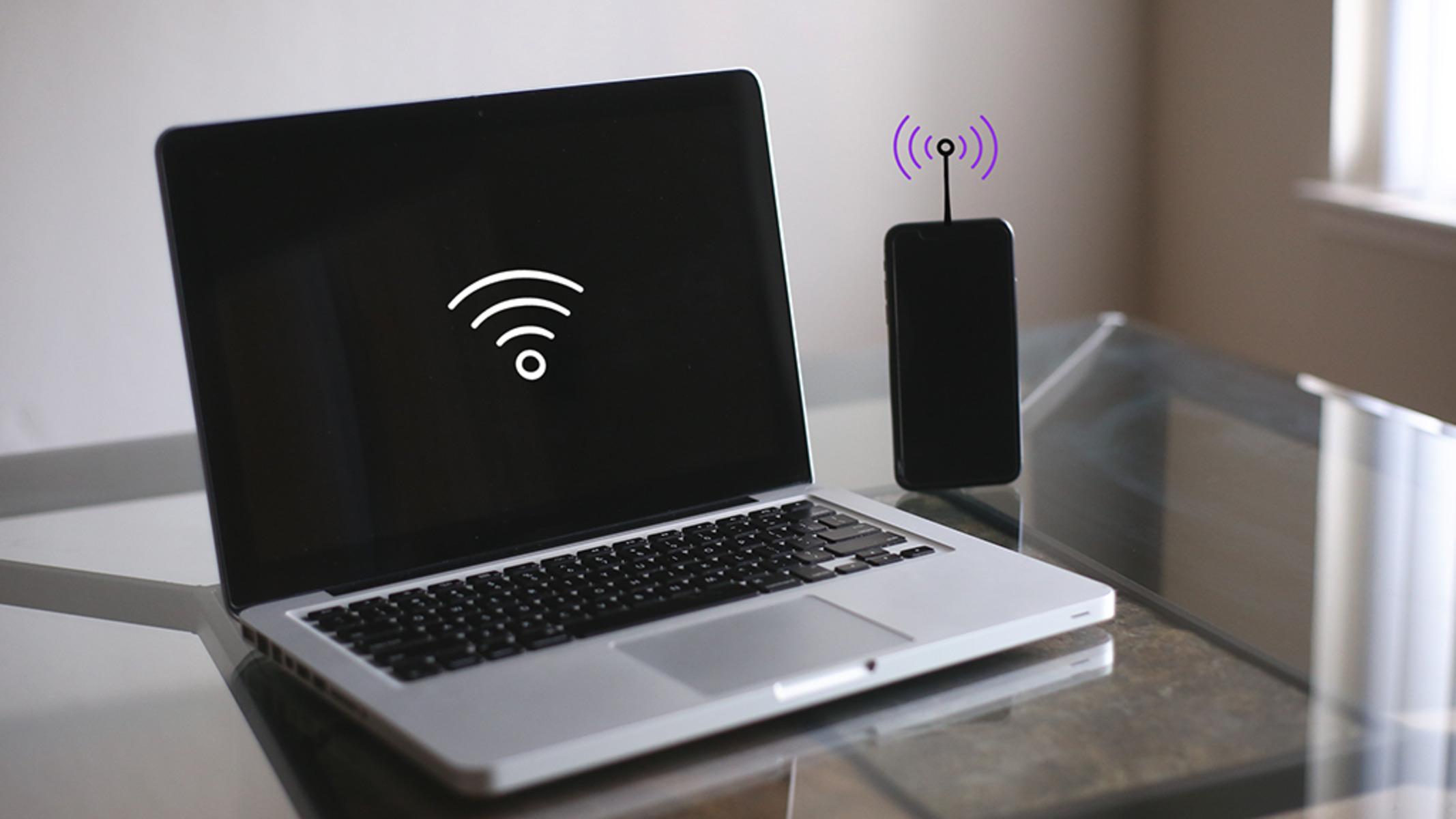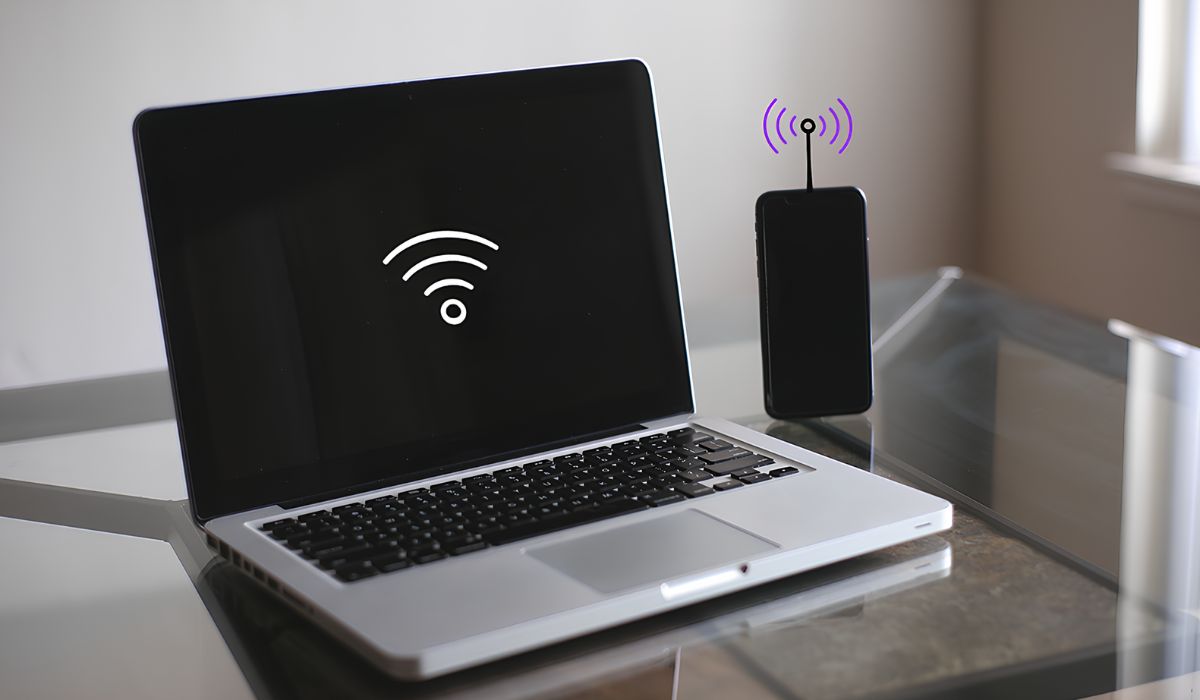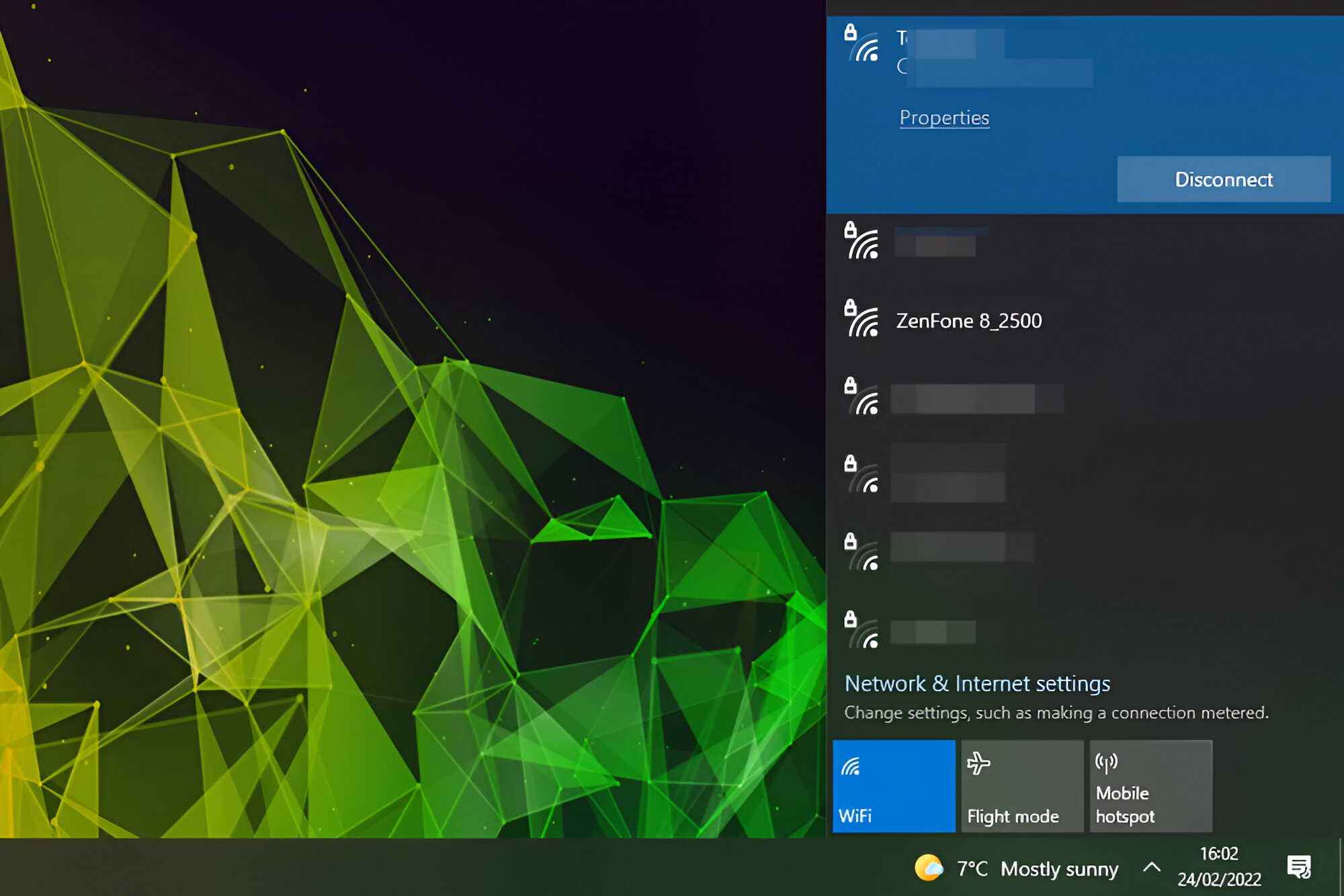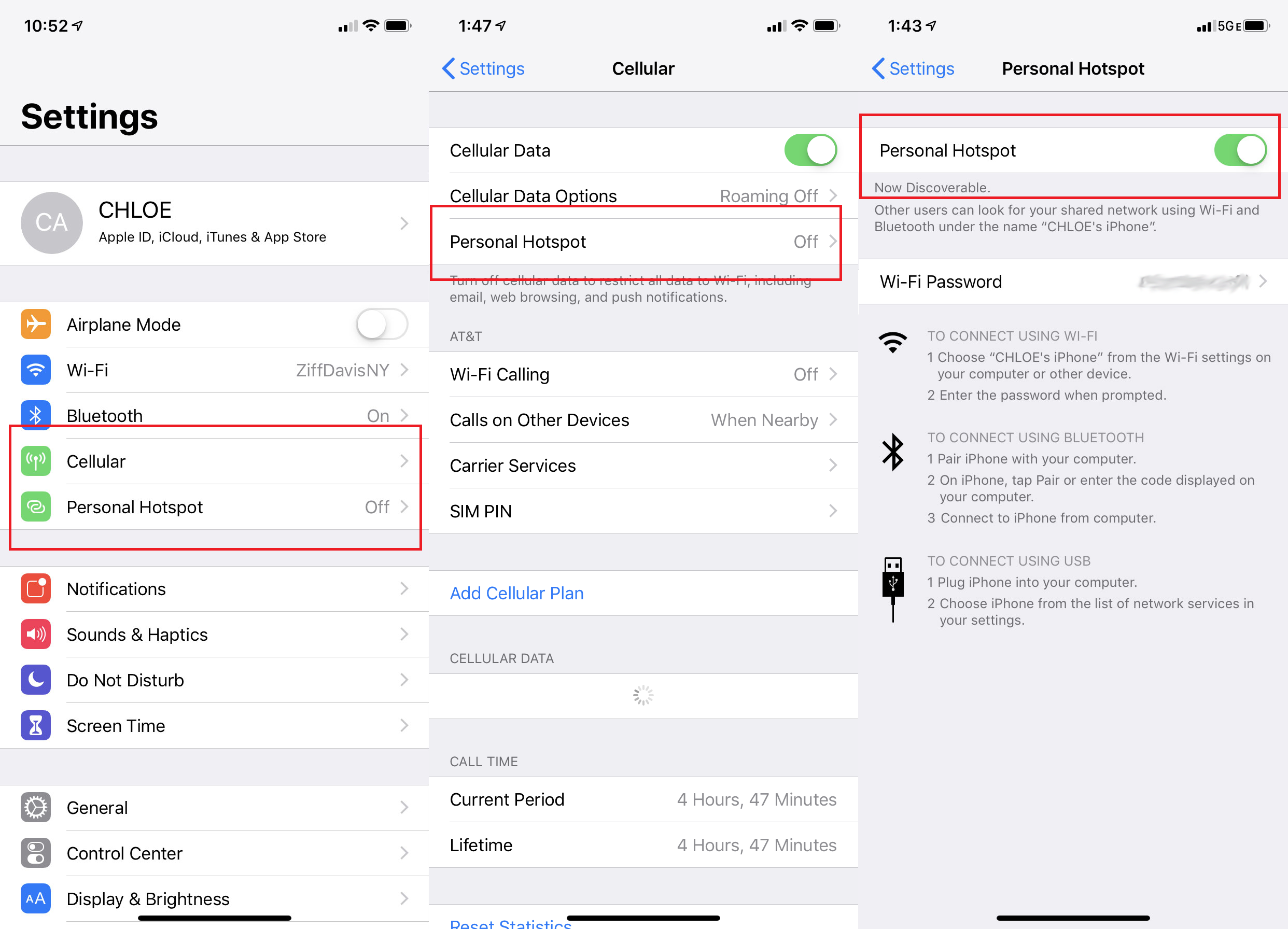Introduction
Experiencing connection issues between your laptop and a hotspot can be frustrating, especially when you're in the midst of important tasks or trying to unwind with your favorite online activities. Whether you're working remotely, attending virtual meetings, or simply browsing the web, a stable and reliable connection is essential. However, encountering disruptions such as slow speeds, intermittent connectivity, or complete disconnection can disrupt your workflow and cause unnecessary stress.
In this comprehensive troubleshooting guide, we will explore the common issues that may arise when attempting to connect your laptop to a hotspot and provide step-by-step solutions to address these challenges. By following these troubleshooting steps, you can effectively diagnose and resolve connectivity issues, ensuring a seamless and uninterrupted online experience.
From checking the Wi-Fi signal strength to updating network drivers and addressing potential interference, this guide will equip you with the knowledge and tools necessary to overcome connectivity hurdles. Additionally, we'll delve into the importance of maintaining updated network drivers and the impact of environmental factors on your connection stability. By the end of this guide, you'll be empowered with practical solutions to troubleshoot and resolve laptop connection issues to a hotspot, enabling you to stay connected with confidence and peace of mind.
So, if you've encountered frustrating connection problems with your laptop and hotspot, fear not. By following the troubleshooting steps outlined in this guide, you'll be well on your way to enjoying a seamless and reliable connection, allowing you to focus on what matters most without the inconvenience of connectivity disruptions. Let's dive into the troubleshooting process and get your laptop smoothly connected to your hotspot once again.
Check Wi-Fi Signal Strength
The first step in troubleshooting laptop connection issues to a hotspot is to assess the Wi-Fi signal strength. A weak signal can significantly impact the stability and speed of your connection, leading to frustrating interruptions and slow performance. Here's how to check and improve the Wi-Fi signal strength:
-
Positioning:
Start by positioning your laptop within close proximity to the hotspot. Ideally, the closer you are to the source of the Wi-Fi signal, the stronger the connection will be. Ensure that there are no physical obstructions, such as walls or large objects, blocking the signal between your laptop and the hotspot. -
Signal Strength Indicator:
Most laptops display the current Wi-Fi signal strength through an indicator in the taskbar or network settings. Look for the signal bars or a visual representation of the signal strength to gauge the current level of connectivity. -
Signal Quality:
In addition to signal strength, it's essential to consider the quality of the signal. A strong signal may still suffer from interference or network congestion, leading to a poor connection experience. Use the signal quality indicator to assess the overall stability of the connection. -
Wi-Fi Analyzer Tools:
Consider using Wi-Fi analyzer tools or smartphone apps to visualize the Wi-Fi signal strength and identify potential sources of interference. These tools provide detailed insights into signal strength, channel utilization, and neighboring networks, allowing you to make informed decisions about optimizing your connection. -
Router Placement:
If you have control over the placement of the hotspot's router, ensure that it is positioned in a central location with minimal obstructions. This strategic placement can enhance the overall coverage and signal strength throughout your space.
By evaluating and optimizing the Wi-Fi signal strength, you can lay a solid foundation for addressing potential connection issues between your laptop and the hotspot. A strong and stable signal forms the basis for reliable connectivity, setting the stage for further troubleshooting steps to ensure a seamless online experience.
Restart Your Laptop
Sometimes, the simplest solutions can yield the most significant results. When encountering connectivity issues between your laptop and a hotspot, restarting your laptop can serve as a quick and effective troubleshooting step. This straightforward approach can address a range of potential issues, including temporary software glitches, network configuration conflicts, and memory allocation issues. Here's how to effectively restart your laptop to resolve connection problems:
Step 1: Close All Applications
Before initiating the restart process, it's advisable to close all running applications and save any unsaved work. This ensures that your system is prepared for a smooth restart without the risk of data loss or interrupted processes.
Step 2: Shut Down Your Laptop
Begin the restart process by shutting down your laptop completely. Depending on your operating system, you can access the shutdown option through the Start menu or power options. Allow your laptop to power down fully before proceeding to the next step.
Step 3: Power On Your Laptop
After your laptop has been shut down, power it on by pressing the power button. As the system boots up, it undergoes a fresh initialization process, which can effectively clear temporary system caches, reset network configurations, and address software-related issues that may have been affecting the connectivity to the hotspot.
Step 4: Reconnect to the Hotspot
Once your laptop has restarted and fully booted up, proceed to reconnect to the hotspot. Access the available Wi-Fi networks and select the hotspot you wish to connect to. Enter the required credentials, if applicable, and establish the connection.
Step 5: Test the Connection
After reconnecting to the hotspot, test the connection by accessing various online resources, streaming content, or engaging in typical online activities. Monitor the stability and speed of the connection to ensure that the restart has effectively resolved the previous connectivity issues.
By following these steps, you can leverage the power of a simple restart to address potential software and configuration-related factors that may have been impeding the connection between your laptop and the hotspot. This uncomplicated yet impactful troubleshooting method can often restore the stability and reliability of your connection, allowing you to resume your online endeavors with confidence and efficiency.
Update Network Drivers
Outdated or corrupted network drivers can significantly impact the connectivity between your laptop and a hotspot, leading to a range of connection issues such as slow speeds, intermittent disconnections, or the inability to establish a stable link. Updating your network drivers is a crucial troubleshooting step that can address these issues and optimize the performance of your network interface card (NIC). Here's a detailed overview of the process:
Step 1: Identify Your Network Adapter
Begin by identifying the specific network adapter installed on your laptop. You can access this information through the Device Manager on Windows or the System Information utility on macOS. Take note of the manufacturer and model of your network adapter, as this information will be essential for obtaining the correct driver updates.
Step 2: Visit the Manufacturer's Website
Once you have identified your network adapter, visit the official website of the manufacturer. Navigate to the support or downloads section, where you can search for the latest driver updates specifically tailored to your network adapter model and the operating system of your laptop.
Step 3: Download and Install the Latest Drivers
Locate the latest driver version compatible with your network adapter and operating system. Download the driver package and follow the manufacturer's instructions for installation. It's important to ensure that you are installing the correct driver version to avoid compatibility issues and potential system instability.
Step 4: Uninstall Previous Drivers (if necessary)
In some cases, it may be necessary to uninstall the existing network drivers before installing the updated versions. This can be done through the Device Manager on Windows or the Network preferences on macOS. Follow the uninstallation process carefully, and restart your laptop if prompted to complete the removal of the old drivers.
Step 5: Test the Connection
After updating or reinstalling the network drivers, test the connection to the hotspot to gauge the impact of the driver updates. Monitor the stability, speed, and overall performance of the connection to ensure that the updated drivers have effectively optimized the network interface and resolved any previous connectivity issues.
By proactively updating your network drivers, you can ensure that your laptop's network interface operates at its full potential, enabling a stable and reliable connection to your hotspot. This essential troubleshooting step is instrumental in addressing compatibility issues, enhancing performance, and mitigating common connectivity challenges, ultimately empowering you to enjoy a seamless and uninterrupted online experience.
Forget and Reconnect to the Hotspot
When encountering persistent connectivity issues between your laptop and a hotspot, the "forget and reconnect" approach can serve as a strategic troubleshooting method to address underlying configuration conflicts and establish a fresh connection. This process involves removing the existing network profile associated with the hotspot from your laptop's settings and subsequently reconnecting to the hotspot, allowing for the reestablishment of a clean and optimized connection.
Step 1: Access Network Settings
Initiate the process by accessing the network settings on your laptop. Depending on your operating system, you can typically access these settings through the network or Wi-Fi preferences. Look for the list of available networks and locate the entry corresponding to the problematic hotspot that you wish to troubleshoot.
Step 2: Forget the Hotspot
Within the network settings, locate the option to "forget" the selected hotspot. This action removes the existing network profile from your laptop, effectively clearing any stored connection information and configuration settings associated with the hotspot. Confirm the removal of the network profile to proceed with the forgetting process.
Step 3: Reconnect to the Hotspot
After successfully forgetting the hotspot, proceed to reconnect to the network. Access the available Wi-Fi networks and select the previously forgotten hotspot from the list. If required, enter the necessary credentials to establish the connection.
Step 4: Test the Reconnection
Upon reconnecting to the hotspot, it is crucial to test the stability and performance of the newly established connection. Engage in typical online activities, such as web browsing, video streaming, or file downloads, to gauge the effectiveness of the forgetting and reconnecting process. Monitor the connection for any signs of improvement in speed, reliability, and overall performance.
By following these steps, you can leverage the "forget and reconnect" method to effectively reset the connection between your laptop and the hotspot, potentially resolving persistent connectivity issues and ensuring a seamless online experience. This approach allows for the elimination of outdated or conflicting network configurations, providing a fresh start for establishing a stable and optimized connection to the hotspot.
Check for Interference
When troubleshooting laptop connection issues to a hotspot, it's crucial to consider the potential impact of interference on the stability and performance of the Wi-Fi signal. Interference can stem from various sources, including neighboring wireless networks, electronic devices, and physical obstructions, all of which have the potential to disrupt the seamless transmission of data between your laptop and the hotspot. Identifying and mitigating interference factors is essential for optimizing the connectivity and ensuring a reliable online experience.
Sources of Interference
-
Neighboring Networks: In densely populated areas or shared spaces, the presence of multiple Wi-Fi networks operating on similar channels can lead to interference. Overlapping signals from neighboring networks can cause signal degradation and conflicts, resulting in connectivity issues for your laptop.
-
Electronic Devices: Electronic devices such as cordless phones, microwave ovens, and Bluetooth-enabled gadgets emit signals that can interfere with Wi-Fi transmissions. The proximity of these devices to your laptop or the hotspot's router can contribute to signal disruption and reduced connection stability.
-
Physical Obstructions: Walls, furniture, and other physical barriers within your environment can impede the propagation of Wi-Fi signals. The presence of such obstructions between your laptop and the hotspot can weaken the signal strength and introduce interference, leading to connectivity challenges.
Mitigating Interference
-
Wi-Fi Channel Selection: Explore the available Wi-Fi channels and consider switching to a less congested channel to minimize interference from neighboring networks. This can be accomplished through the router's settings or using Wi-Fi analyzer tools to identify the least congested channels for optimal connectivity.
-
Placement of Electronic Devices: Strategically position electronic devices away from the hotspot's router and your laptop to reduce the potential for signal interference. Creating physical distance between these devices and the Wi-Fi equipment can help mitigate the impact of electronic interference.
-
Optimizing Signal Path: Rearranging furniture and adjusting the placement of the hotspot's router can optimize the signal path between the router and your laptop. Minimizing physical obstructions and creating a clear line of sight between the devices can enhance signal propagation and reduce interference.
By proactively addressing potential sources of interference, you can significantly improve the stability and performance of the connection between your laptop and the hotspot. Mitigating interference factors is a proactive approach to optimizing Wi-Fi connectivity, ensuring a reliable and uninterrupted online experience.
Reset Network Settings
Resetting network settings on your laptop can serve as a powerful troubleshooting method to address complex connectivity issues and restore the overall functionality of your network interface. This process involves clearing and resetting various network-related configurations, including Wi-Fi profiles, TCP/IP settings, and network adapters, to eliminate potential conflicts and inconsistencies that may be hindering the connection to the hotspot. By initiating a network settings reset, you can effectively establish a clean slate for your network environment, potentially resolving persistent connectivity challenges and optimizing the performance of your laptop's connection to the hotspot.
Step-by-Step Guide to Reset Network Settings:
-
Access Network Settings: Begin by accessing the network settings or network preferences on your laptop. Depending on your operating system, you can typically locate this option in the control panel, system preferences, or network settings menu.
-
Initiate Network Reset: Look for the option to reset or restore network settings. This action may be labeled differently based on the operating system, but it generally involves accessing a dedicated network reset or reset network settings option within the network settings interface.
-
Confirm the Reset: Upon selecting the network reset option, you may be prompted to confirm the action due to its impactful nature. Confirm the reset process to proceed with clearing the existing network configurations and resetting the network components to their default or initial state.
-
Restart Your Laptop: After initiating the network settings reset, it's advisable to restart your laptop to allow the changes to take effect. A full system reboot ensures that the network components are properly initialized and reconfigured following the reset process.
-
Reconnect to the Hotspot: Once your laptop has restarted, proceed to reconnect to the hotspot. Access the available Wi-Fi networks, select the hotspot, and establish the connection by entering the required credentials, if applicable.
-
Test the Connection: After reconnecting to the hotspot, thoroughly test the stability, speed, and overall performance of the connection. Engage in typical online activities to ensure that the network settings reset has effectively resolved any previous connectivity issues.
By following these steps, you can leverage the network settings reset to effectively clear and reconfigure the network environment on your laptop, potentially resolving complex connectivity challenges and optimizing the stability of the connection to the hotspot. This proactive troubleshooting approach provides a comprehensive reset of network configurations, allowing for a fresh start and the establishment of a reliable and seamless online experience.
Contact Your Internet Service Provider
If you have diligently followed the preceding troubleshooting steps and are still experiencing persistent connectivity issues between your laptop and the hotspot, it may be time to engage the expertise and support of your Internet Service Provider (ISP). Your ISP plays a pivotal role in delivering and maintaining the quality of your internet connection, making them a valuable resource for addressing complex network-related challenges. When reaching out to your ISP, it is essential to convey the specific details of the connection issues you are encountering, enabling them to provide targeted assistance and solutions tailored to your unique circumstances.
Initiating contact with your ISP can be approached through various channels, including customer support hotlines, online chat support, or dedicated support ticket systems. When communicating with your ISP, consider providing the following details to facilitate a comprehensive assessment of the connectivity issues:
-
Description of Symptoms: Clearly articulate the symptoms and manifestations of the connectivity issues, such as slow speeds, frequent disconnections, or the inability to establish a stable connection to the hotspot. Providing specific examples of the observed behavior can aid the ISP in diagnosing the root cause of the problem.
-
Timeline of Occurrences: Communicate the timeline of when the connectivity issues began, including any notable events or changes in your network environment. Identifying the timing of the onset of the issues can offer insights into potential triggers or external factors affecting the connection.
-
Previous Troubleshooting Efforts: Share details of the troubleshooting steps you have already undertaken, including the methods used and their respective outcomes. This information demonstrates your proactive approach and allows the ISP to focus on alternative solutions that build upon your previous efforts.
-
Hardware and Software Details: Provide information about the hardware and software components involved in the connection, including the make and model of your laptop, the hotspot's router, and any additional networking equipment. Additionally, disclose any recent updates or modifications made to your network setup.
When engaging with your ISP, it is important to maintain open communication and follow any guidance or instructions provided by their support representatives. They may initiate diagnostic tests, remotely assess your network connection, or provide specific configurations tailored to your network environment. By actively collaborating with your ISP, you can leverage their expertise to pinpoint and resolve underlying network issues, ultimately ensuring a robust and dependable connection between your laptop and the hotspot.
In summary, enlisting the support of your Internet Service Provider is a strategic step in addressing persistent connectivity challenges that have proven resistant to initial troubleshooting efforts. By engaging with your ISP and providing comprehensive details about the issues at hand, you can tap into their specialized knowledge and resources, leading to targeted solutions that optimize the stability and performance of your laptop's connection to the hotspot.

























